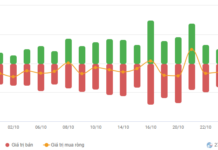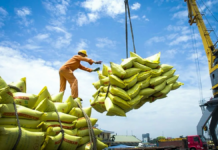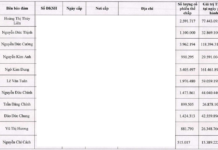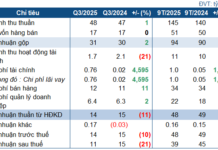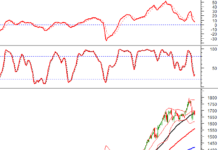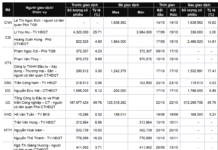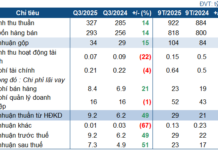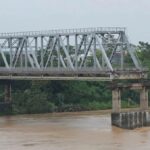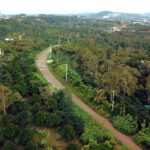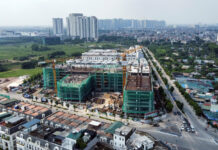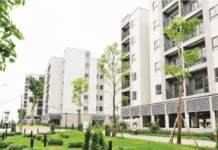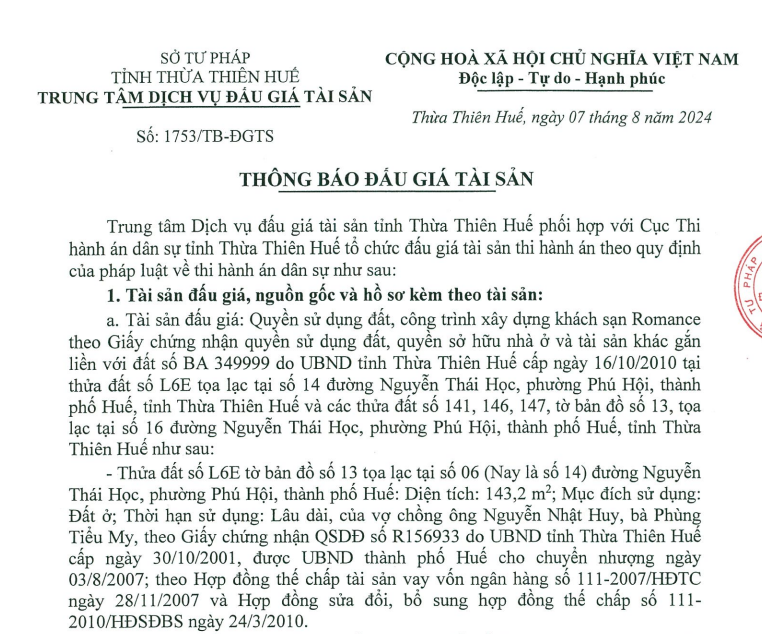The Ministry of Transport has issued an urgent directive to its agencies, units, and local Departments of Transport to address the aftermath of Typhoon No. 3 and the subsequent floods. Mr. Uong Viet Dung, Chief of Office of the Ministry of Transport, informed Tien Phong on September 12th.
The Ministry has instructed the Railway Department to collaborate with the Vietnam Railway Corporation to direct units to strictly implement patrol and guard regimes at critical works, locations, and focal points, especially bridges crossing flood-affected rivers and road sections prone to flooding, rockfall, and landslides.
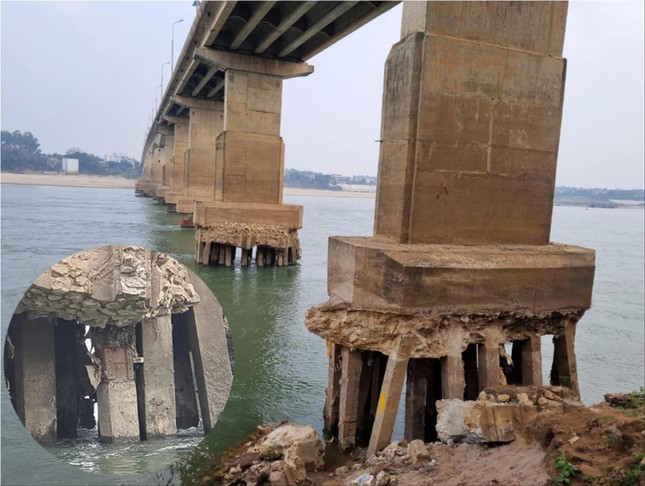
According to experts, in the long run, localities need to carry out regular maintenance and repairs to detect and promptly address safety issues. (The photo shows the current state of Trung Ha Bridge in Phu Tho Province, which has also been closed to traffic)
The Vietnam Maritime Administration and Inland Waterways Administration are tasked with directing local Port Authorities and Inland Waterways Port Authorities to enhance inspections of mooring and anchoring procedures for vessels and inland waterway vehicles. Ship and boat owners must securely moor and anchor their vessels in safe areas, preventing them from drifting and colliding with transportation infrastructure and other structures.
Additionally, the Vietnam Maritime Administration is instructed to coordinate with the Vietnam Maritime Search and Rescue Coordination Center to continue collaborating with the Ministry of Defense, the Ministry of Public Security, and other local authorities in the search and rescue operations for missing persons due to Typhoon No. 3.
In a conversation with Tien Phong, Mr. Nguyen Manh Thang, Vice Director of the Vietnam Road Administration, stated that many local bridge and road structures are deteriorating but lack the necessary funds for repairs, posing potential safety hazards.
Prior to Typhoon No. 3, the Administration directed localities to inspect road infrastructure, especially vulnerable structures such as ferry terminals, pontoon bridges, ferry mooring works, canoes, pontoons, fords, and locations prone to flooding, landslides, and previous damage. Given the complex nature of storms and floods, the leadership of the Vietnam Road Administration emphasized the high risk of accidents.
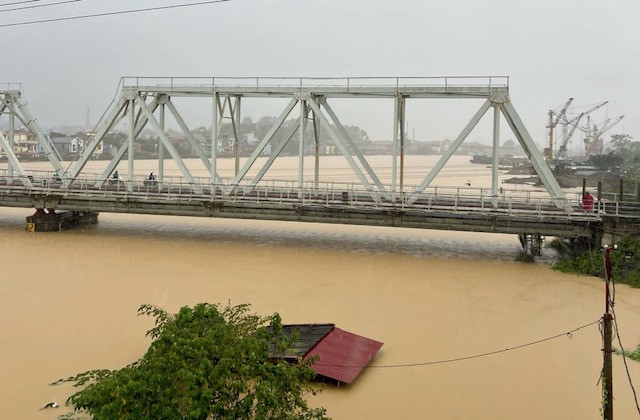
Dap Cau Bridge in Bac Ninh Province is closed to traffic
On September 10th, the Vietnam Road Administration issued an urgent directive to localities, ordering the temporary suspension of operations on unsafe bridges due to natural disasters, high water levels, strong currents, or structural weaknesses.
Maintenance and Repairs Need to be More Timely
According to Mr. Tran Chung, Chairman of the Association of Investors in Vietnam’s Road Traffic Infrastructure, while many new bridges have been constructed, the maintenance of older structures has not received adequate attention.
Mr. Chung emphasized the critical importance of maintenance and upkeep after the completion of a construction project, even surpassing the importance of new construction. This entails strict maintenance regimes, encompassing activities such as surveys, monitoring, performance evaluations, and timely repairs.
Building a New Phong Chau Bridge
The Vietnam Road Administration has proposed to the Ministry of Transport to assign it the task of preparing an investment proposal for a new Phong Chau Bridge on National Highway 32C, funded by the state budget. The construction is expected to take place in 2024-2025.
Mr. Chung also pointed out limitations in Vietnam’s bridge maintenance practices, including inadequate planning, resources, and expertise for effective implementation. He added that in the face of nature’s unpredictable forces, the best strategy is to focus on risk reduction, prioritizing the protection of human life, and restricting the use of certain transportation infrastructure during emergencies.
Mr. Tran Danh Loi, former Chairman of the Hanoi Bridge and Road Association, stressed the necessity of regular maintenance and periodic inspections for bridges in localities to ensure timely detection and resolution of safety issues.
Accordingly, bridge management agencies should immediately address all visible safety concerns, conduct surveys and assessments, and promptly remedy potential safety hazards. For deteriorating bridges, advanced technical methods and technologies should be employed to evaluate and predict safety issues that cannot be directly observed.
“There is a need for close coordination between management agencies at different levels to define clear responsibilities for each unit and sector in bridge maintenance. Optimized solutions must be sought to ensure traffic safety, especially at critical bridges like Chuong Duong Bridge,” asserted Mr. Loi.
Over 20 Bridges Closed or Restricted to Traffic
As of now, more than 20 bridges have been closed or had traffic restrictions due to flooding. In addition to the closures in Hanoi and Phu Tho Province, several bridges in other localities have been temporarily closed or had traffic restrictions imposed. In Thai Nguyen, the Gia Bay, Ben Tuong, and Mo Bach Bridges are closed. In Tuyen Quang, vehicles weighing 3.5 tons or more and passenger buses are prohibited from using Nong Tien, Bo, Son Duong, An Hoa, and Kim Xuyen Bridges. In Yen Bai, the Yen Bai Bridge on National Highway 37 is closed. In Bac Giang, residents are advised against using the iron bridge over the Thuong River (Bac Giang City). In Bac Ninh, the Net Bridge (Yen Phong – Tu Son section) is closed to cars, and the Dap Cau Bridge (connecting Bac Ninh City and Bac Giang Province) is closed to all vehicles. In Thuan Thanh, the Ho Bridge prohibits buses with 9 seats or more and trucks with a load capacity of over 15 tons. In Nam Dinh, the Ninh Cuong pontoon bridge is closed to traffic.
Request to Halt Operations on Vulnerable Bridges Amid High Water Levels
The collapse of the Phong Chau Bridge in Phu Tho has prompted the Vietnam Road Administration to take immediate action. They have mandated a temporary cessation of traffic on bridges deemed unsafe due to natural disasters, high water levels, strong currents, or structural weakness. This proactive measure ensures the safety of commuters and highlights the administration’s commitment to maintaining a robust and secure transportation network across Vietnam.
The $35 Million Road Project in Bao Loc Falls into Disrepair: A Tale of Wasted Taxpayer Money and Negligence
After a hiatus of almost four years, construction on the Bao Loc bypass road in Lam Dong Province has resumed. Despite significant deterioration, the road remained open to daily traffic, even though the local authorities had imposed a ban.

